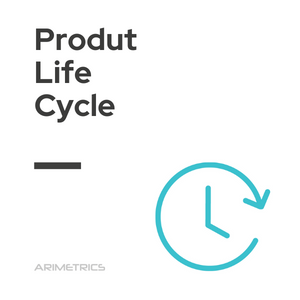Definición:
The product life cycle is the progression of an item that lasts up to four stages that lengthen during its time on the market. Four stages are: introduction, growth, maturity and decline.
Keep in mind that it is not the same for everyone. That is, each product has a life cycle and the time of the stages differs from one item to another. In digital marketing, products have a different life cycle than traditional.
The stages of a product’s life cycle
- Introduction: In this initial stage, the product is new to the market and the responsible company seeks to create significant awareness of the product. During this phase, intensive marketing efforts are made to attract consumers’ attention and generate interest in the product’s features and benefits.
- Growth: This is the stage in which the highest sales and a notable increase in market acceptance are experienced. The company strives to develop brand preference among consumers and increase its market share against the competition. Marketing strategies are intensified to capitalize on the growing interest and ensure a strong market position.
- Maturity: At this stage, sales growth begins to slow down and there is strong competition in the market. The product has already achieved wide acceptance, which means that there are a lot of similar offerings available to consumers. Therefore, it becomes essential for companies to differentiate their product through innovative strategies, unique promotions and added value to maintain consumer interest.
- Decline: At this stage, product profits are at their lowest point and begin to decline. Competition is intense and there may be a shift in consumer preferences to other products or emerging trends. At this point, companies often begin to use other creative techniques to try to increase sales, either through discounts, relaunches or modifications to the product to try to revitalize its appeal in a changed market.
Marketing strategies for each stage
- Introduction strategies: During the introduction phase, it is crucial to establish a strong brand presence. Companies must invest in advertising and promotions to generate interest and attract early adopters. Social media and content marketing are effective tools at this stage.
- Growth strategies: In the growth stage, companies should focus on building customer loyalty. Marketing campaigns should be aimed at increasing market share and building brand preference. Offering promotions and loyalty programs can be beneficial.
- Strategies at maturity: During maturity, it is vital to differentiate the product from the competition. Companies can implement marketing strategies focused on innovation and improved customer service. Promotions and targeted advertising are also important to maintain consumer interest.
- Strategies in decline: In the decline stage, companies must evaluate whether it is viable to revitalize the product or whether it is better to withdraw it from the market. Strategies may include reducing prices, seeking new markets or modifying the product to attract a new target audience.
Impact on business strategy
- Adaptation to market changes: Companies must be attentive to market trends and changes in consumer preferences. This will allow them to adjust their marketing and product development strategies to meet new demands.
- Ongoing product evaluation: Conducting regular analysis of the product life cycle is crucial to identify what stage the product is at and what actions need to be taken. This includes collecting data on product performance and consumer feedback.
- Innovation and product development: Constant innovation is essential to prolong the useful life of a product. Companies must invest in research and development to improve their existing products and launch new ones that respond to changing market needs.

